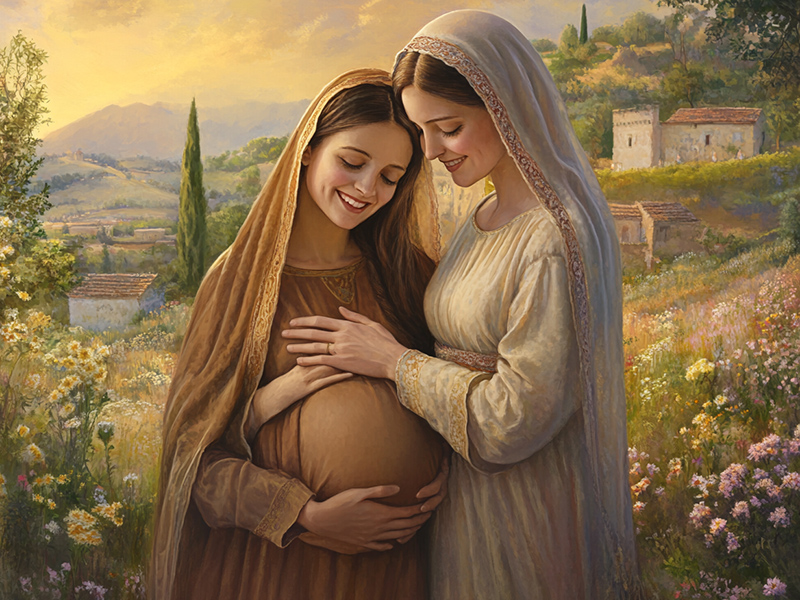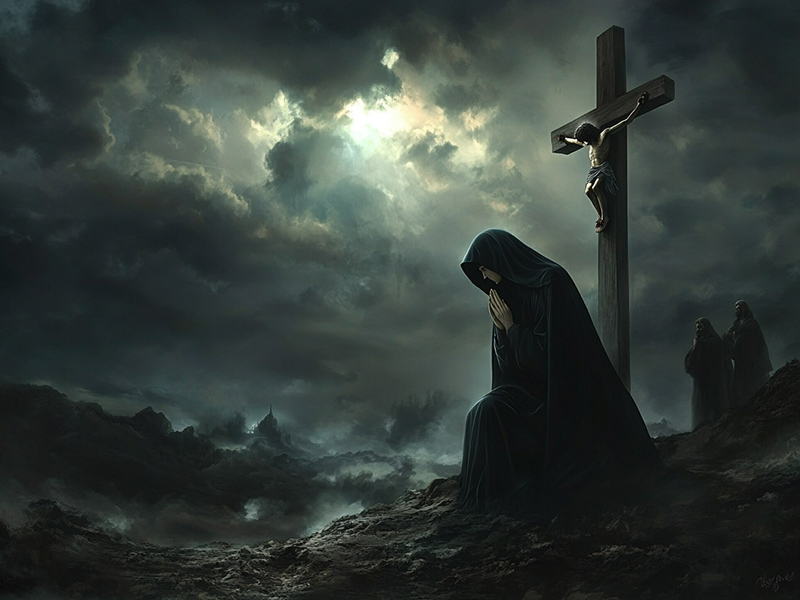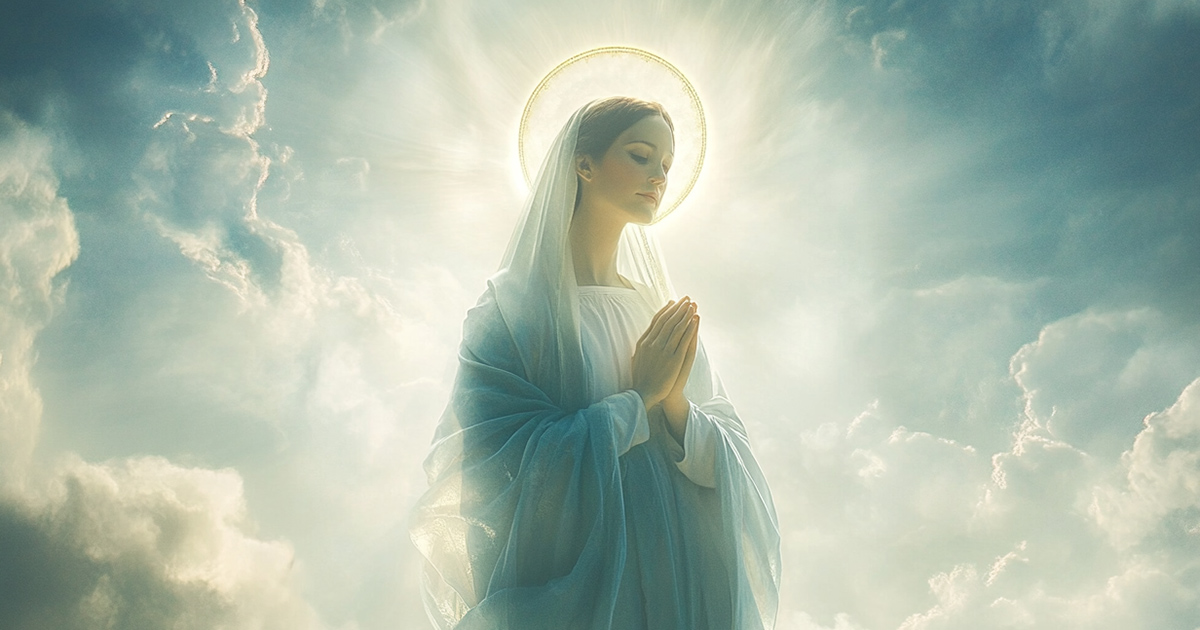Saint Mary, the humble young woman from Nazareth who became the Mother of God, is a figure of immense importance and reverence in the Christian faith.
The Miraculous Fiat of Mary
Saint Mary, a humble young woman from the town of Nazareth, holds a pivotal role in salvation history. Her journey began with an extraordinary encounter that would change the course of humanity. One day, while going about her ordinary life, the angel Gabriel appeared to her, bringing a message from God. “Hail, full of grace! The Lord is with you,” Gabriel proclaimed (Luke 1:28). Understandably, Mary was troubled by the angel’s greeting, yet her heart remained open.

Gabriel continued, revealing that Mary had been chosen by God to be the mother of His Son. “You will conceive in your womb and bear a son, and you shall call his name Jesus. He will be great and will be called the Son of the Most High” (Luke 1:31-32). Though Mary questioned how this could be, since she was a virgin, Gabriel reassured her: “The Holy Spirit will come upon you, and the power of the Most High will overshadow you” (Luke 1:35).
In this profound moment, Mary’s response was simple but powerful: “Behold, I am the handmaid of the Lord; let it be to me according to your word” (Luke 1:38). This “fiat,” or “yes,” was an act of total surrender to God’s will. Mary did not fully understand the magnitude of what was being asked of her, yet her faith and trust in God were unwavering. Her acceptance of God’s plan marked the beginning of the Incarnation, when God became man in the person of Jesus Christ.
Mary’s fiat is a model for all believers. It shows us that faith does not require full understanding, but rather trust in God’s plan, even when it defies logic or expectation. In this moment, Mary teaches us the beauty of humble obedience and the transformative power of saying “yes” to God.

A Life of Quiet Strength and Devotion
From the moment of her fiat, Mary’s life became intertwined with the mission of her Son. She was present at key moments in Jesus’ life, though often in quiet, humble ways. After Gabriel’s visit, Mary set out to visit her cousin Elizabeth, who was also miraculously pregnant with John the Baptist. Upon Mary’s arrival, Elizabeth, filled with the Holy Spirit, proclaimed, “Blessed are you among women, and blessed is the fruit of your womb!” (Luke 1:42).
In response, Mary offered her famous hymn of praise, the Magnificat: “My soul magnifies the Lord, and my spirit rejoices in God my Savior” (Luke 1:46-47). This beautiful song of gratitude reveals Mary’s deep understanding of God’s mercy and her profound humility. Despite the unique role she was called to play, Mary recognized her smallness before God, praising Him for lifting up the lowly and filling the hungry with good things.
Mary’s life of devotion continued throughout Jesus’ childhood. She and her husband, Joseph, raised Jesus in a loving home, faithfully fulfilling their duties as His earthly parents. They brought Him to the Temple for His presentation, took Him to Jerusalem for Passover, and cared for Him during His early years in Nazareth. Though the Gospels provide only glimpses of these early years, we can imagine the depth of Mary’s love for her Son, watching Him grow in wisdom and grace, all while pondering the mysteries surrounding His divine nature.
Mary’s Presence During Jesus’ Ministry
As Jesus began His public ministry, Mary remained a quiet but constant presence. One of the most significant moments of her influence occurred at the wedding feast at Cana. When the hosts ran out of wine, Mary noticed the need and brought it to Jesus’ attention, simply stating, “They have no wine” (John 2:3). Jesus responded, “My hour has not yet come,” but Mary, confident in her Son’s power and compassion, told the servants, “Do whatever he tells you” (John 2:5).
It was through Mary’s intercession that Jesus performed His first public miracle, turning water into wine. This event not only revealed Jesus’ divine authority but also highlighted Mary’s role as an intercessor. Even today, she continues to intercede for us, guiding us to her Son with the same gentle instruction: “Do whatever He tells you.”
Throughout Jesus’ ministry, Mary remained in the background, allowing His work to unfold. Her humility shines through in these moments, as she consistently points others toward Jesus rather than seeking attention for herself. She teaches us the value of quiet service, trust, and faithfulness, even when we are not in the spotlight.

The Mother at the Foot of the Cross
The most poignant and heart-wrenching moment of Mary’s life came as she stood at the foot of the cross, watching her Son suffer and die. In this moment, Mary’s heart was pierced with the sword of sorrow, as Simeon had prophesied years earlier in the Temple (Luke 2:35). Yet, even in her deep anguish, she remained steadfast, present to Jesus in His final moments.
As Jesus hung on the cross, He saw His mother standing nearby, along with His beloved disciple, John. In one of His final acts of love, Jesus entrusted Mary to John, saying, “Woman, behold your son,” and to John, “Behold your mother” (John 19:26-27). In this moment, Mary became not only the mother of Jesus but the spiritual mother of all believers. She accepted this new role with the same faith and humility that characterized her entire life.
Mary’s presence at the cross is a testament to her strength and unwavering devotion. She stood by her Son until the very end, sharing in His suffering and offering her silent support. Her example reminds us that faith often requires us to remain with God, even in the darkest moments, trusting in His plan even when it is painful.

The Assumption: Mary’s Glorious Reward
After Jesus’ resurrection and ascension, Mary continued to live among the early Christian community, offering her wisdom and support. Tradition tells us that at the end of her earthly life, Mary was assumed body and soul into heaven, where she was crowned Queen of Heaven. This event, known as the Assumption, is a reminder of the special place Mary holds in God’s plan of salvation.
The Assumption celebrates the belief that Mary, having been preserved from sin, was also preserved from the corruption of death. Her body, like her soul, was taken up into the glory of heaven, where she now reigns alongside her Son, interceding for us. This moment also points to the hope of resurrection for all believers, reminding us that heaven is our ultimate destiny.
Mary’s Assumption is a testament to her unique role in salvation history, as well as a sign of God’s great love and reward for those who faithfully serve Him. It invites us to look to Mary as a model of holiness, trust, and devotion, while also reminding us that we too are called to share in the glory of eternal life.
Feast Days and Celebrations
- The Solemnity of the Assumption of the Blessed Virgin Mary – August 15
This feast celebrates Mary’s assumption into heaven, body and soul. It is a day to reflect on her role in salvation history and her continued intercession for believers. The Assumption also reminds us of the hope we have in the resurrection and the promise of eternal life with God. - The Solemnity of Mary, Mother of God – January 1
This feast honors Mary’s title as Theotokos, or “God-bearer,” a recognition of her role as the mother of Jesus Christ, who is both fully God and fully man. It is a day to celebrate the unique relationship Mary shares with her Son and to reflect on her motherhood in our own lives as she watches over and guides us as spiritual children. - The Immaculate Conception – December 8
This feast commemorates the doctrine that Mary was conceived without original sin, a unique grace given to her by God in preparation for her role as the Mother of Jesus. The Immaculate Conception reminds us of Mary’s purity and holiness, as well as God’s plan to bring about salvation through her “yes.”
Each of these feast days offers a chance to reflect on the life of Mary, her unique role in God’s plan, and her ongoing intercession for all believers. Through her example, we are called to trust in God’s will, to live lives of humility and devotion, and to seek her guidance as we journey closer to Christ.



